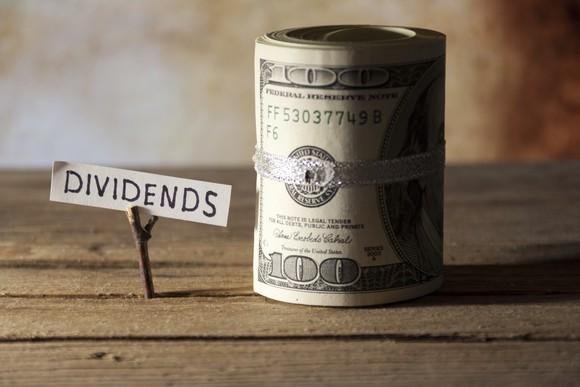Dividend Payout Ratio is an important indicator of how a company is doing financially. First off, we look at the definition of the ratio and how to compute dividend payout ratio.
What is ‘Dividend Payout Ratio’?
In simple terms, dividend ratio is the percentage of net income that is paid to the shareholders as a dividend.
The amount that is not paid out to shareholders is retained by the company for various uses like:
- To pay off debt
- Reinvest in core operations
- Awaiting opportune times to deploy the cash
Dividend Payout Ratio Formula
Dividend Payout Ratio = Dividends / Net Income
Over the same period, TED reported net earnings of $20 per share. Using the formula above, Company TED’s dividend payout ratio is:
$4 / $20 = 20%
In other words, Company TED distributed 20% of its net income as dividends last year and retained the remaining 80% for other operating needs.
P.S. Do check out Dividendmagic.com.my’s exclusive interview too.
‘Dividend Payout Ratio’ varies by Business Maturity & Industry
A company’s dividend payout ratio can be affected by a number of factors.
Businesses in different growth stages can be expected to have different dividend policies. A young, fast-growing company is usually focused on reinvesting earnings in order to grow the business. As such, they generally sport low (or even zero) dividend payout ratios.

In addition, when comparing dividend payout ratios, you should also remember that they will vary widely according to industry.
For example, where many high-tech sectors often distribute small or non-existent dividends while banks and utilities typically pay out a healthy chunk of their gains each year.
Also, companies operating in some industries — such as real estate investment trusts (REITs) — are required by law to distribute a certain percentage of earnings (this figure now sits at 90% for REITs).
For this reason, it can be misleading to compare the ratios of companies operating in different industries.
Important Metric for Income Investors
For income-oriented investors, the dividend payout ratio is a closely-watched financial measure.
Dividend payout ratios provide valuable insight into a company’s dividend policy and useful for assessing a dividend’s sustainability.
In the example of TED above, a ratio of 20% means that the company is generating ample profits to support this relatively modest payment.
In fact, if management considered it in the best interests of the company, it could jolly well afford to raise its dividend payment significantly.
On the other hand, an excessively high payout ratio (e.g. >100%) suggests that the company might be paying out more than it can comfortably afford. It also means that it is dipping into past retained earnings or debt to pay out dividends.
This leave little room for it to plow back into the business and leaves the firm highly susceptible to a decline in future dividend payments.
— Check out this trust with declining distributions here.
Last Words
Typically, companies are reluctant to cut dividends, since it can drive the stock price down and reflect poorly on the management’s abilities.
Thus, you can utilize the long-term trend in the payout ratio to your benefit. A steadily rising ratio could indicate a healthy, maturing business, but a spiking one could mean the dividend is heading into unsustainable territory.
The best scenario would be that the company keeps the payout ratio constant but increases the dividend rate – it means the company is making enough profits to give you more dividends and still reinvest in the firm for more growth ahead.
We’ve released our 3 HOT growth stock picks which could skyrocket >100% by the end of 2017. History has shown that getting in early on a good idea can often pay big bucks – so don’t miss out on this moment.
Simply click here to receive your copy of our brand-new FREE report, “3 stocks poised for explosive growth”.
Do Like us on Facebook too as we share the latest investing articles and stock ideas for you!

